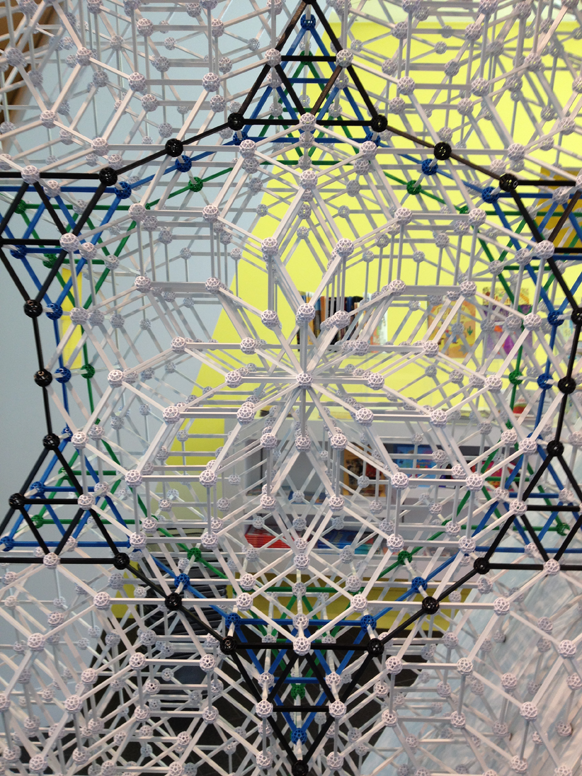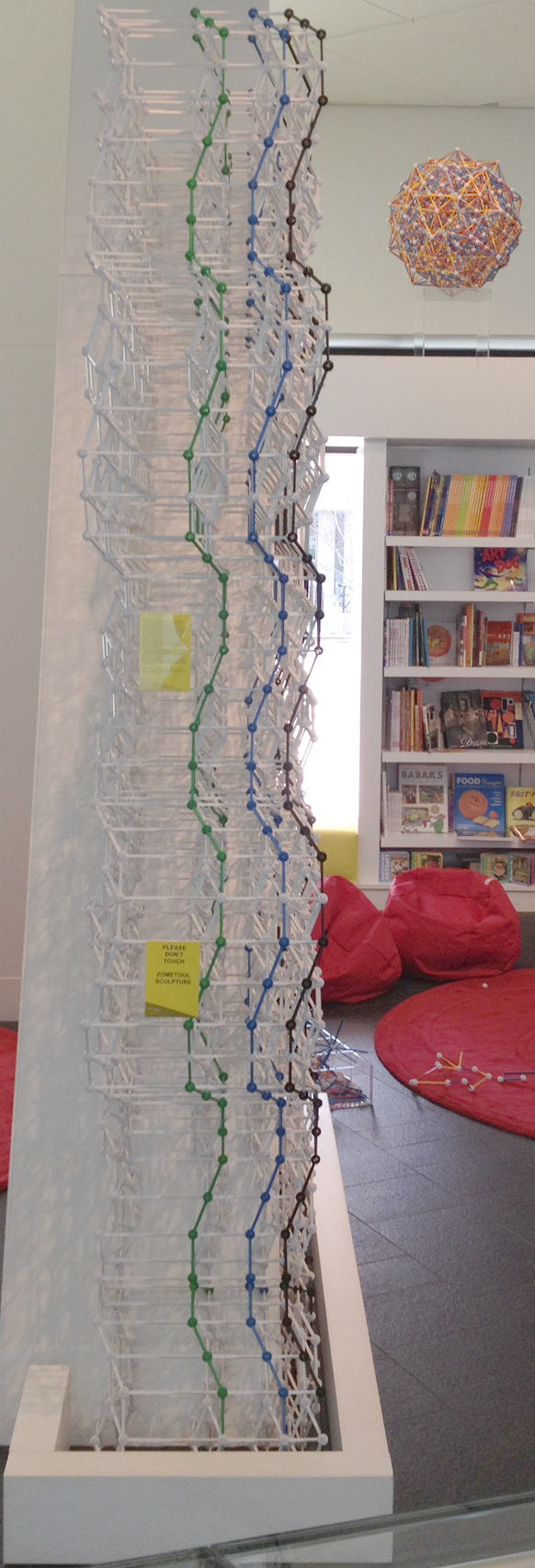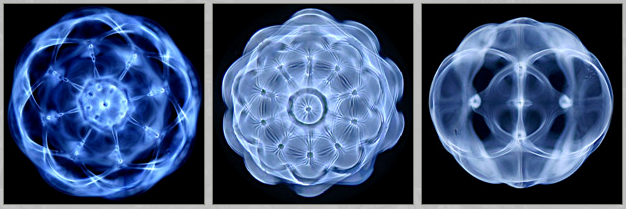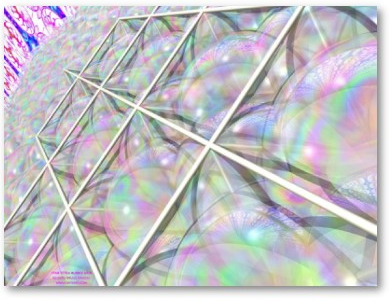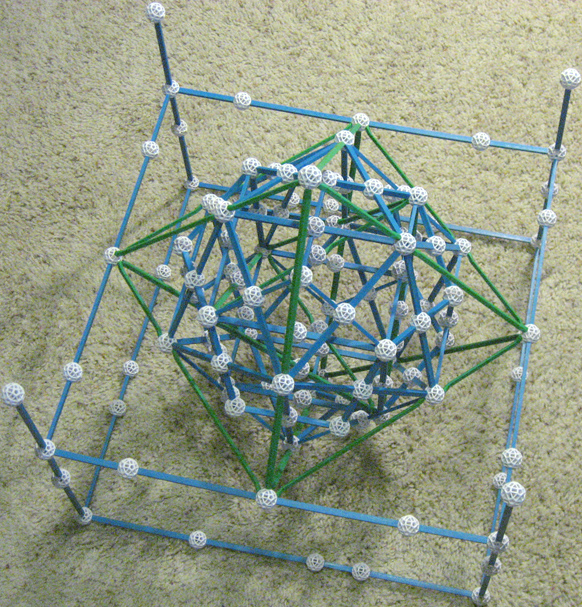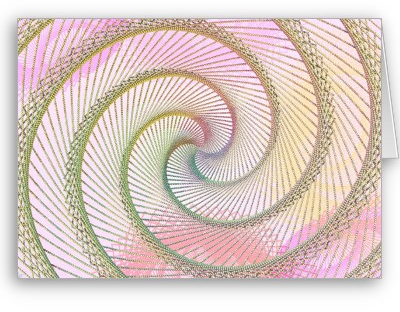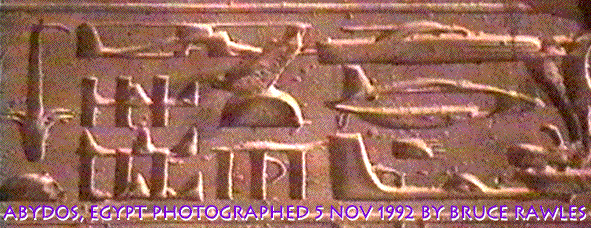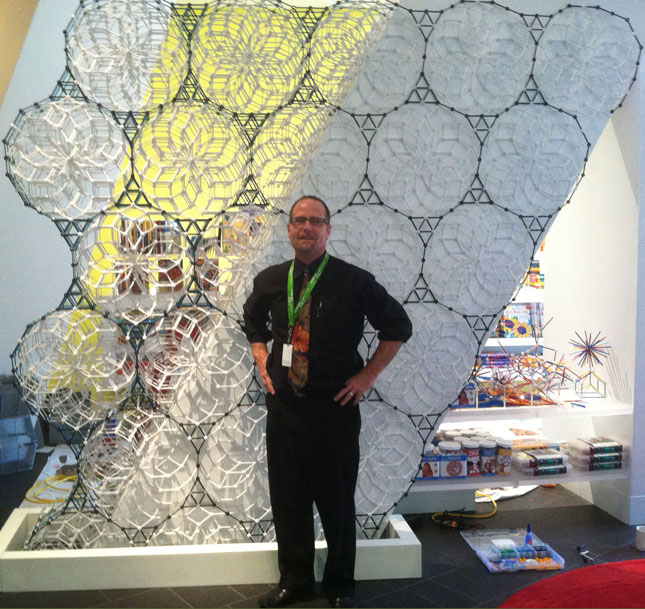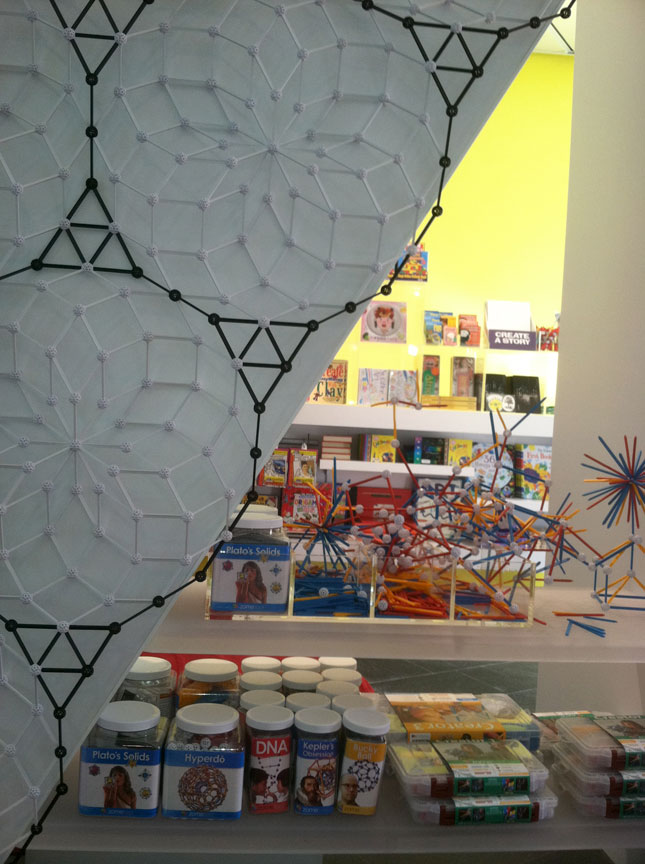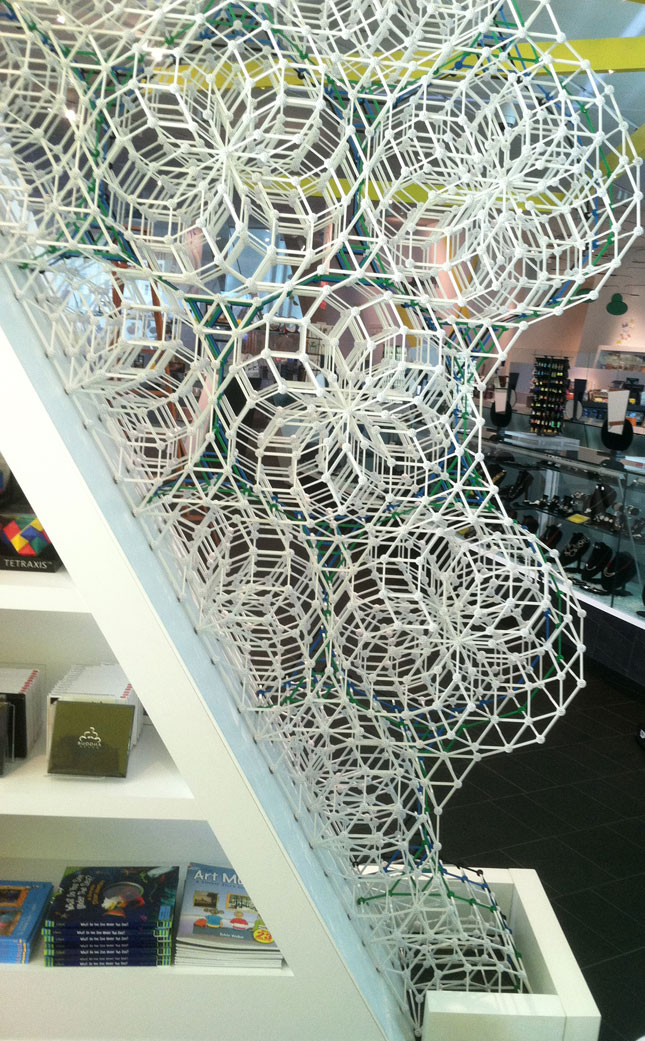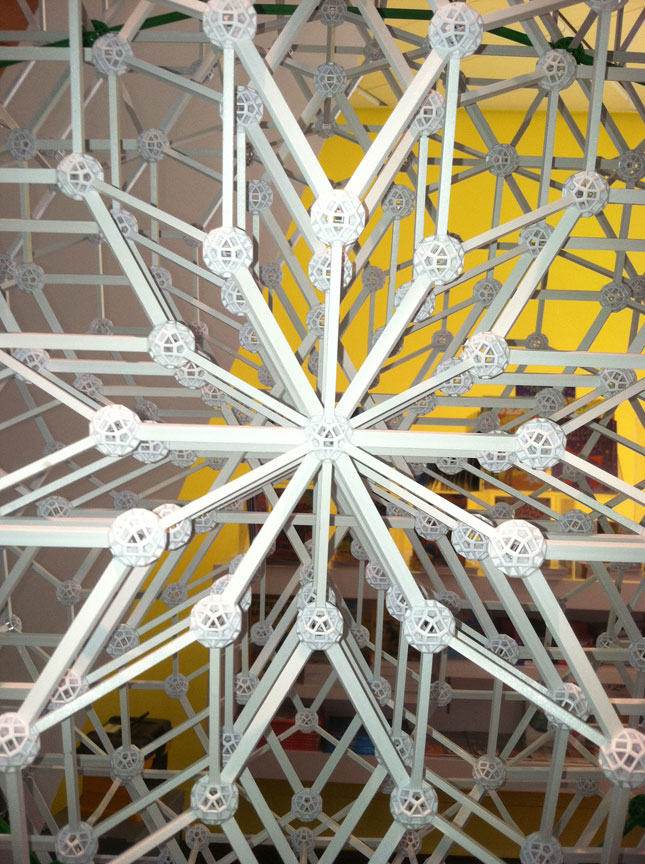Sacred Geometry bulletin for April 2012:
2) Websites, Books, Videos, Music and Quotes
3) Request for Submissions
1) News, Events, Interviews, Workshops, Classes, Exhibits, Products, Articles, Tutorials
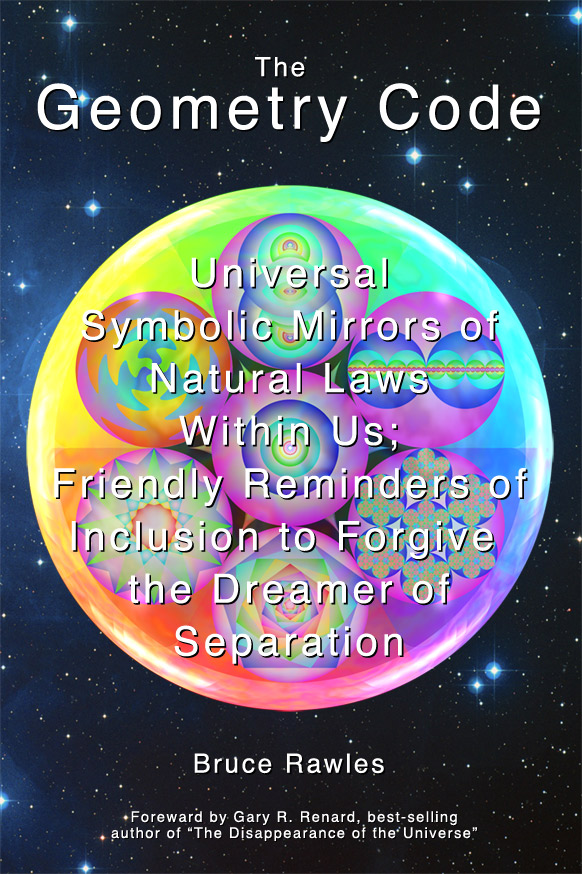
The Geometry Code book is ALMOST ready! Hooray!
Here’s the ‘back story’: About the time that I was finishing Sacred Geometry Design Sourcebook, I was already working on another book, which is now almost ready! Rather than reinvent the wheel, I think the Preface I wrote explains how the book came about, and gives a hint as to what it is about. I’ll upload the Table of Contents soon, too. A little ‘trivia aside’:
The Kybalion, a book about the seven Hermetic Laws, and one of the primary inspirations for this book, arrived a century ago in 1912 (at least that’s date in a copy of the book we have), so it just worked out that this book celebrates The Kybalion’s centennial anniversary! You can read the (relatively short) entire Kybalion book online here or download as a pdf here. Ever since I first read it, it seemed like it needed more examples, and depth and breadth with contemporary insights, so The Geometry Code book is my response to that idea. :-)
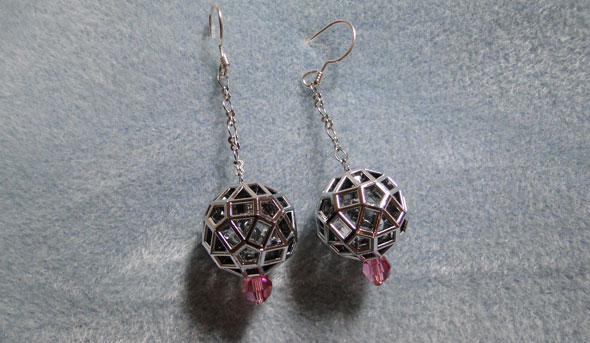
“Chrome Zome” jewelry still available … for Mother’s Day (or any occasion)!
Zometool Jewelry — featuring elegant chrome-plated Zome hubs — is STILL available … and ONLY here. Nancy (our resident jeweler) can make these earrings with the bottom (Swarovski 6mm) crystal in a variety of colors in addition to the pink (rose) and jet black varieties shown here, including clear, aqua, blue, light blue, midnight blue, teal, green, purple, amethyst purple, and other colors and variations. Each earring features the unique Zometool hub (12 pentagonal holes, 20 triangular holes and 30 golden rectangle holes) with a metallic chrome finish. Chains and earring hooks will vary with styles. … (read more…)
2) Websites, Books, Videos, Imagery, Music and Quotes
Playful Geometer’s Cosmic SpaceCrafts is a line of arts and crafts integrating Sacred Geometry into their 3D models.
Here are more examples of Playful Geometer’s artistry and a sample image: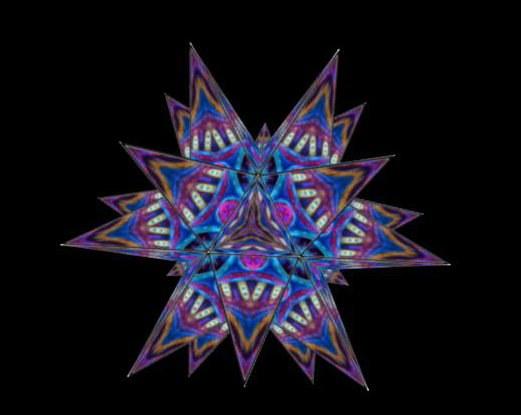
Thanks to András, who alerted me (some months ago) to this interesting video of how triangular bits can drill square holes. Scroll down this page about the Reuleaux triangle to see a neat animation (The Reuleaux triangle rotating inside a square) showing a similar technique; note that the center of the bit must be offset from the center of the triangle for this to work.
I think I might have already (in prior bulletins) talked about Magnus Wenninger’s polyhedra and polytope models, but if you haven’t already seen this cornucopia of great models, it’s worth a look-see.
Wikipedia is such a great resource for all sorts of factual information about geometry, symbolism and more. Here are some example references (thanks to Alan Michelson):
Golden rectangle,
Truncated icosidodecahedron,
Truncated cuboctahedron,
Rhombicosidodecahedron,
Rhombicuboctahedron,
and, of course, there are gazillions more, even just perusing polyhedra in our provincial little 3-dimensional realm. :-)
3) Request for Submissions
If you would like to stay connected and network with kindred souls online, check out my pages on
FaceBook,
YouTube,
Twitter
Pinterest and
LinkedIn.
I’m enjoying connecting with both recent and long-time friends and colleagues and discovering new friends of friends :-)
As always, please let me know how I can support you. Please send me any interesting items about sacred geometry or related interests … since everything is inter-related!
Thanks for your interest & support! :-)
BTW, I always appreciate enthusiastic reviews on my Amazon SGDS book page, and it’s a good “win-win” way to cross-promote your work as well.
PO Box 192, Castle Rock, Colorado 80104
co-author of The Geometry Code screensaver
author of Sacred Geometry Design Sourcebook
Free monthly email bulletin on sacred geometry and related subjects
Please join me on FaceBook and LinkedIn!
You might also enjoy Bruce’s blog which has lots of other information not included in these bulletins.
